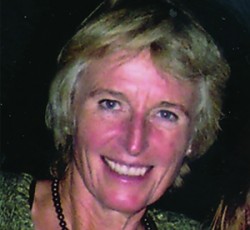Kinesiology, a clients perspective
with Dr Anna Rolfes
As a natural healing modality Kinesiology developed in the 1970s, when musculoskeletal clinicians discovered a more refined aspect of the manual muscle testing method used to date. The clinical observations provided evidence for the following propositions:
1. Poorly functioning muscles and structural imbalance can be corrected by means other than exercise programs.
2. Functional change in muscle performance during a manual isometric muscle test can reveal imbalance in the human energy field.
In the last 40 years Kinesiology – with its clinical assessment tool of indicator muscle testing (also called muscle monitoring) – has provided people with chronic disease and unwellness a complementary pathway to work from their inner resources and life energy to make positive changes to their health.
The following transcripts of interviews with people who have experienced Kinesiology sessions document how they as clients felt about the sessions.
The interview technique was a semi-structured protocol.
The participants were asked to recall their kinesiology healing sessions. They were encouraged to describe their experience, how it felt to be muscle tested, what reaction they had to it, what understanding they had of the method, and what their interpretation of the procedure was.
I had prepared questions in relation to the theme: ‘Does indicator muscle testing and the phenomenon of indicator muscle change enhance a person’s perception of reality and, if so, in what way?’
The aim was to keep the conversation free-flowing and open-ended to allow a dialogue in which to learn from the interviewee’s experience and his/her interpretation of indicator muscle testing.
The questions acted as prompts in the conversation when the narrative of the interviewee ceased. My main task as an interviewer was to encourage each participant to tune into his/her experience and give a vivid account of it.
The interview structure allowed participants to recall all aspects of the kinesiology session which they regarded as important to their experience.
The ten participants were: Kim, Tony, Ruth, Susan, Jack, Doris, Barbara, Peter, Maria and Linda. They all had consulted Kinesiologists to help them improve their health problems.
• Kim, the 27-year-old mother of two children, had kinesiology sessions to better cope with her situation of having a family and looking after two young children. See
• Tony is a 39-year-old research scientist in cognitive psychology. He had kinesiology sessions for food allergies and, more recently, for coping with the murder of a friend. See
• Ruth is a 28-year-old yoga teacher and mother of a young baby. She had kinesiology sessions to help her cope with her new role as a mother. Prior to that she had encountered muscle testing for various other health problems. See
• Susan is a 34-year-old teacher who had reoccurring headaches for which she sought help through kinesiology. See
• Jack is a 41-year-old real estate agent who had kinesiology sessions to heal his glandular fever and reoccurring gout attacks. See
• Doris is a 44-year-old music teacher who had kinesiology sessions to help heal a broken arm and improve her asthma. See
• Barbara is a 32-year-old artist who consulted Kinesiologists for different health problems over the years. See
• Peter is a 36-year-old journalist who experienced muscle testing during chiropractic treatment and had kinesiology sessions for his reoccurring meningitis. See
• Maria is a 31-year-old school teacher who had kinesiology sessions to heal her chronic fatigue. See
• Linda is a 36-year-old naturopath and young mother who had kinesiology sessions for food allergies and other health problems. See
All of the above people had experienced muscle testing on several occasions and with different kinesiology practitioners. Click on their name to go their interview.
Written by Dr Anna Rolfes 2009
Share Kinesiology, a clients perspective with your friends on Facebook

Leave a Reply